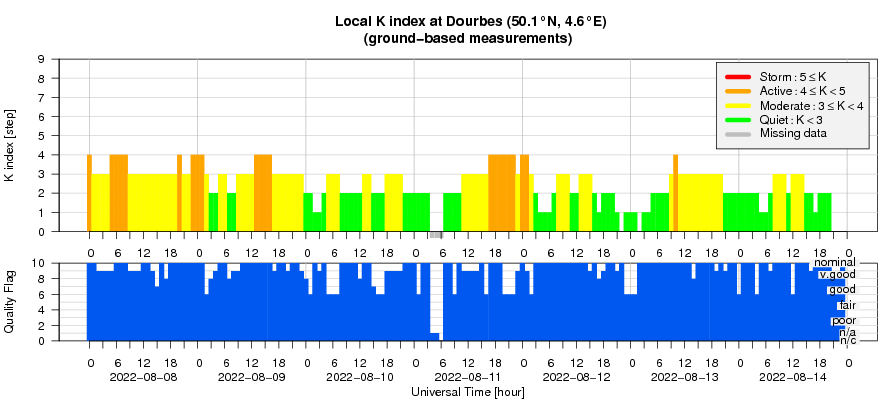- Table of Content
- 1.Review of sola...
- 2.Review of geom...
- 3.The Internatio...
- 4.PROBA2 Observa...
- 5.Geomagnetic Ob...
- 6.The SIDC space...
- 7.Action!
2. Review of geomagnetic activity
3. The International Sunspot Number by SILSO
4. PROBA2 Observations (8 Aug 2022 - 14 Aug 2022)
5. Geomagnetic Observations at Dourbes (8 Aug 2022 - 14 Aug 2022)
6. The SIDC space weather briefing
7. Action!
Review of solar activity
Flares
Solar flaring activity was low at the start of the week when most regions on disc where in decay or otherwise stable. There were 2 low-level C-class flares in the afternoon of August 7 after which the X-ray flux remained below C-level until August 11, when the newly emerging region NOAA 3077 as well as new flux emergence in existing NOAA active region 3076 caused some low C-class flares. Another newly emerging region (NOAA 3079) then was responsible for most of the activity on August 12-13 and produced many C-class flares, the strongest of which was a C6.8 flare peaking at 07:31UTC on August 13.
Solar Wind Disturbances
A partial halo coronal mass ejection (CME) was observed in LASCO C2 from around 12:48 UTC on August 14, with an estimated velocity of around 650 km/s. The CME is related to an on disc filament eruption in the north-western quadrant and was associated to long duration C2.4 flare, at 12:35 UT on August 14, with an associated observed type II radio emission. The bulk of the CME was directed to the south-west, but a possible impact at Earth was predicted for August 17.
At the end of the week on August 14 a trans-equatorial negative polarity coronal hole started transiting the central meridian.
Particle flux
The greater than 10 MeV proton flux was at nominal levels throughout the week. The greater than 2 MeV electron flux first crossed the 1000 pfu threshold on the afternoon of August 9 and remained enhanced for the remainder of the week. The 24h electron fluence rose to moderate levels on August 9 and remained at moderate levels throughout the rest of the week.
Review of geomagnetic activity
Solar Wind
Earth was under the influence of the high-speed stream from positive polarity equatorial coronal holes. By late August 7, the solar wind speed rose to 600km/s and it remained at those levels for around 3 days. A very slow decline then set in and the speed reduced to just under 500km/s by the end of the week. On August 7 the magnitude of the interplanetary magnetic field reached a value of almost 15nT in the compression region. Bz was variable but mostly negative in the compression region and reaching to -13nT. The orientation of the magnetic field indicated a connection to a positive sector (field away from the Sun).
Geomagnetic impact
Geomagnetic conditions reached storm levels with the onset of the high speed stream. Late on August 7, an isolated episode of moderate geomagnetic storming was recorded. Over the rest of the week a downward trend was observed, with quiet to unsettled conditions by the end of the week.
The International Sunspot Number by SILSO
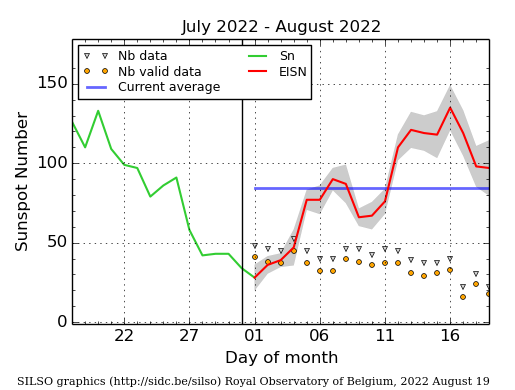
The daily Estimated International Sunspot Number (EISN, red curve with shaded error) derived by a simplified method from real-time data from the worldwide SILSO network. It extends the official Sunspot Number from the full processing of the preceding month (green line), a few days more than one solar rotation. The horizontal blue line shows the current monthly average. The yellow dots gives the number of stations that provided valid data. Valid data are used to calculate the EISN. The triangle gives the number of stations providing data. When a triangle and a yellow dot coincide, it means that all the data is used to calculate the EISN of that day.
PROBA2 Observations (8 Aug 2022 - 14 Aug 2022)
Solar Activity
Solar flare activity fluctuated from very low to low during the week.
In order to view the activity of this week in more detail, we suggest to go to the following website from which all the daily (normal and difference) movies can be accessed: https://proba2.oma.be/ssa
This page also lists the recorded flaring events.
A weekly overview movie can be found here (SWAP week 646). https://proba2.oma.be/swap/data/mpg/movies/weekly_movies/weekly_movie_2022_08_08.mp4
Details about some of this week's events can be found further below.
If any of the linked movies are unavailable they can be found in the P2SC movie repository here https://proba2.oma.be/swap/data/mpg/movies/
Saturday Aug 13
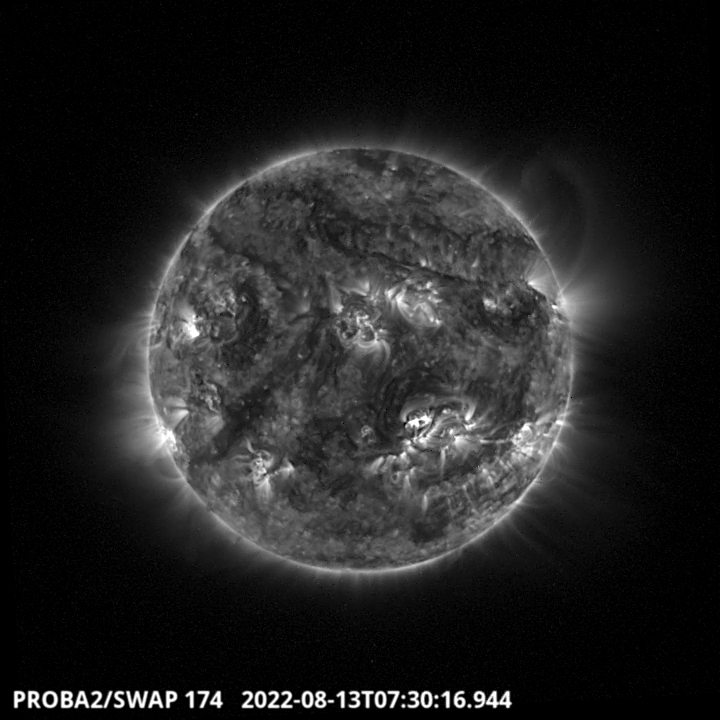
The biggest flare of the week, a C6.8 flare, has been produced by the NOAA active region 3079 located in the South West quadrant of the solar disk - SWAP image
Find a movie of the events here (SWAP movie) http://proba2.oma.be/swap/data/mpg/movies/20220813_swap_movie.mp4
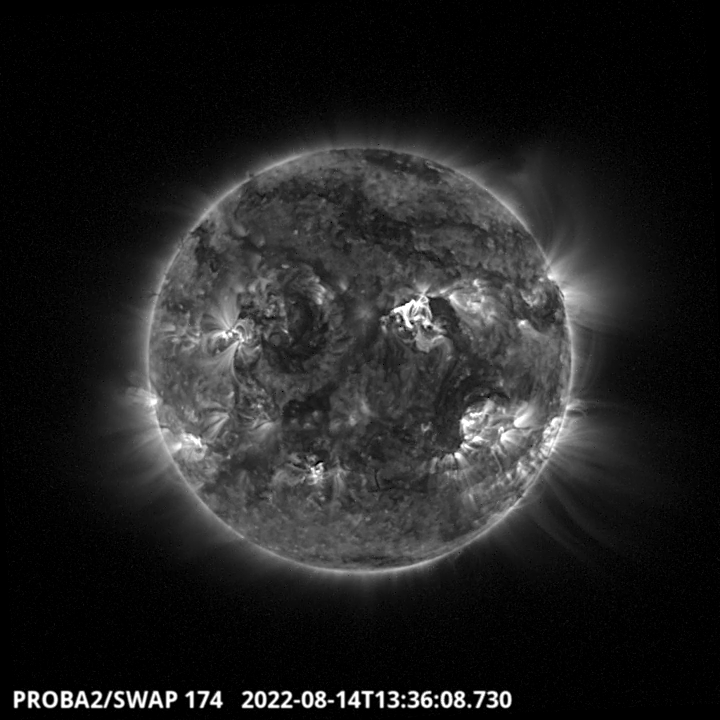
A flare is observed around 11:33 in the North Western Quadrant. It is followed by a large flow of plasma. It is well visible in the SDO/AIA image on https://spaceweather.com
Find a movie of the events here (SWAP movie) https://proba2.oma.be/swap/data/mpg/movies/20220814_swap_movie.mp4
The SIDC space weather briefing
The Space Weather Briefing presented by the SIDC (https://www.sidc.be) forecaster on duty from Aug 7 to Aug 14. It reflects in images and graphs what is written in the Solar and Geomagnetic Activity report: https://www.stce.be/briefings/20220815_SWbriefing.pdf
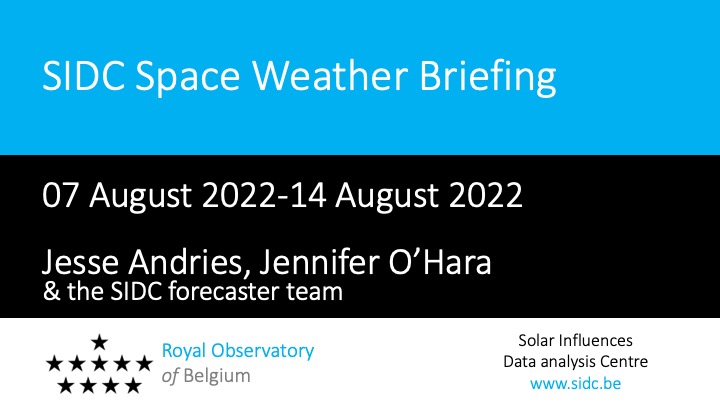
Filament eruption - slide 22 of pdf
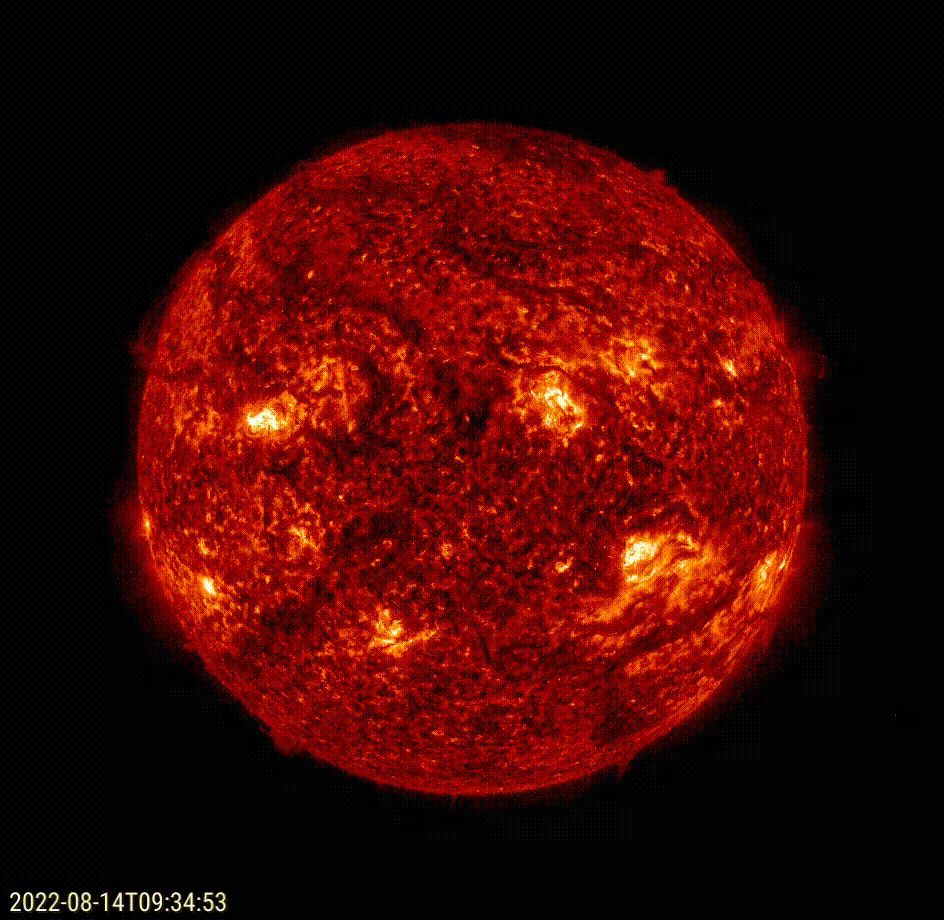
Coronal mass ejection - slide 26 of ppd
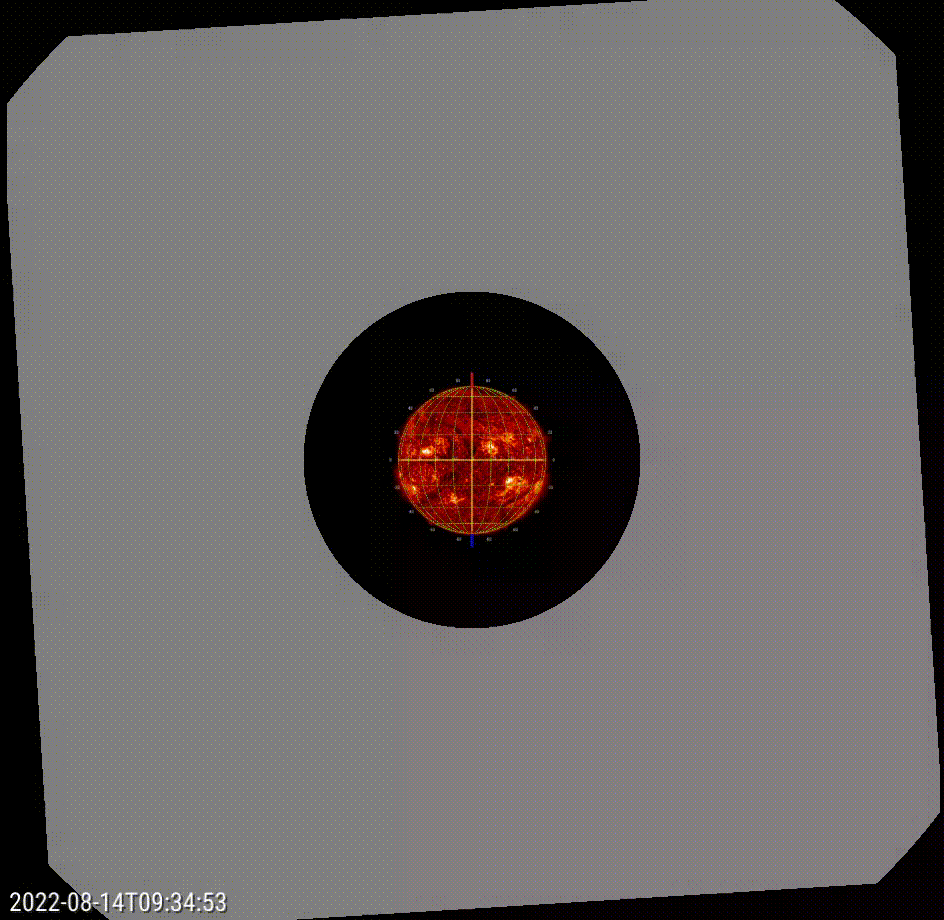
Action!
Check out our activity calendar: activities and encounters with the Sun-Space-Earth system and Space Weather as the main theme. We provide occasions to get submerged in our world through educational, informative and instructive activities.
If you want your event in our calendar, contact us: stce_coordination at stce.be
* August 25, Public Lecture on Space Weather and Aviation, Astropolis, Oostende, Belgium
* September 24-25 Space Pole Open Days, Brussels, Belgium
* October 24-28, 18th European Space Weather Week, Zagreb, Croatia
* November 21-23, Space Weather Introductory Course - onsite, by the STCE, Brussels, Belgium - fully booked
* December 5, 6, 8, 9, Space Weather Introductory Course - online, by the STCE, zoom - fully booked
Check: https://www.stce.be/calendar

